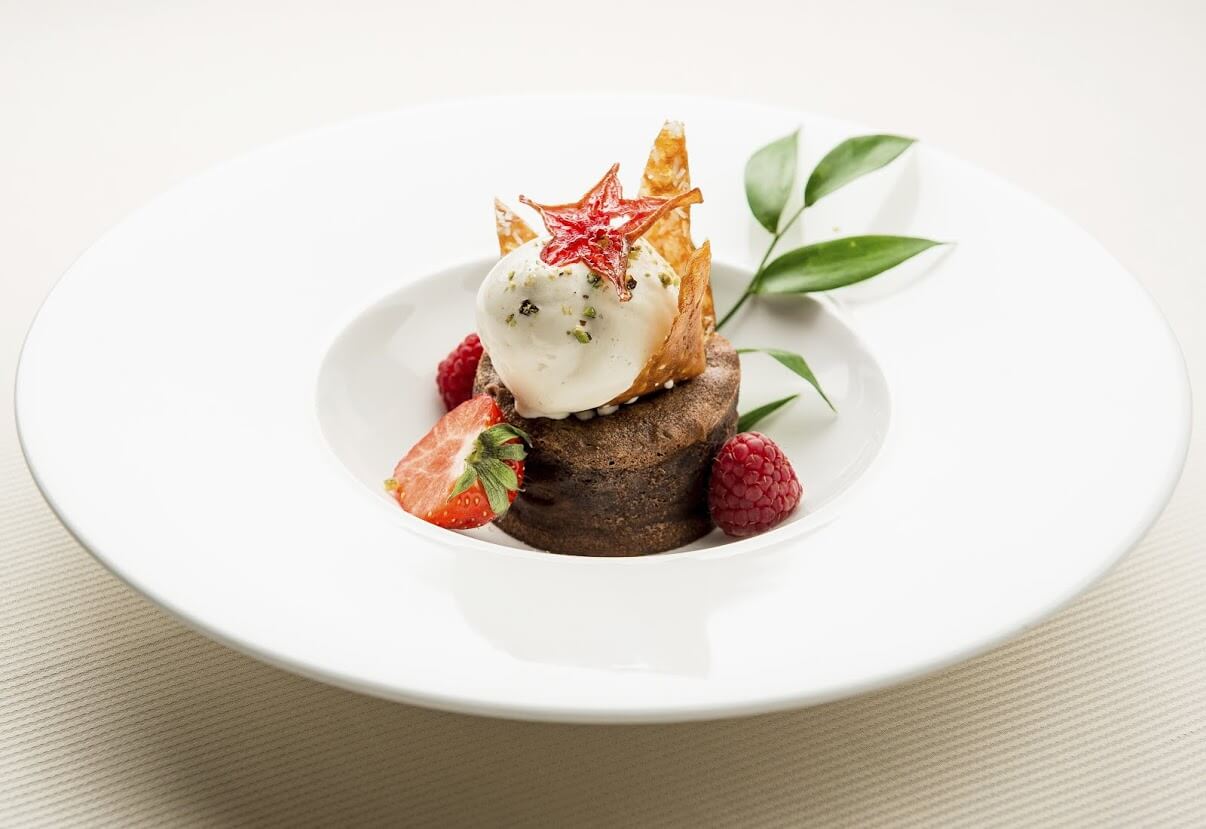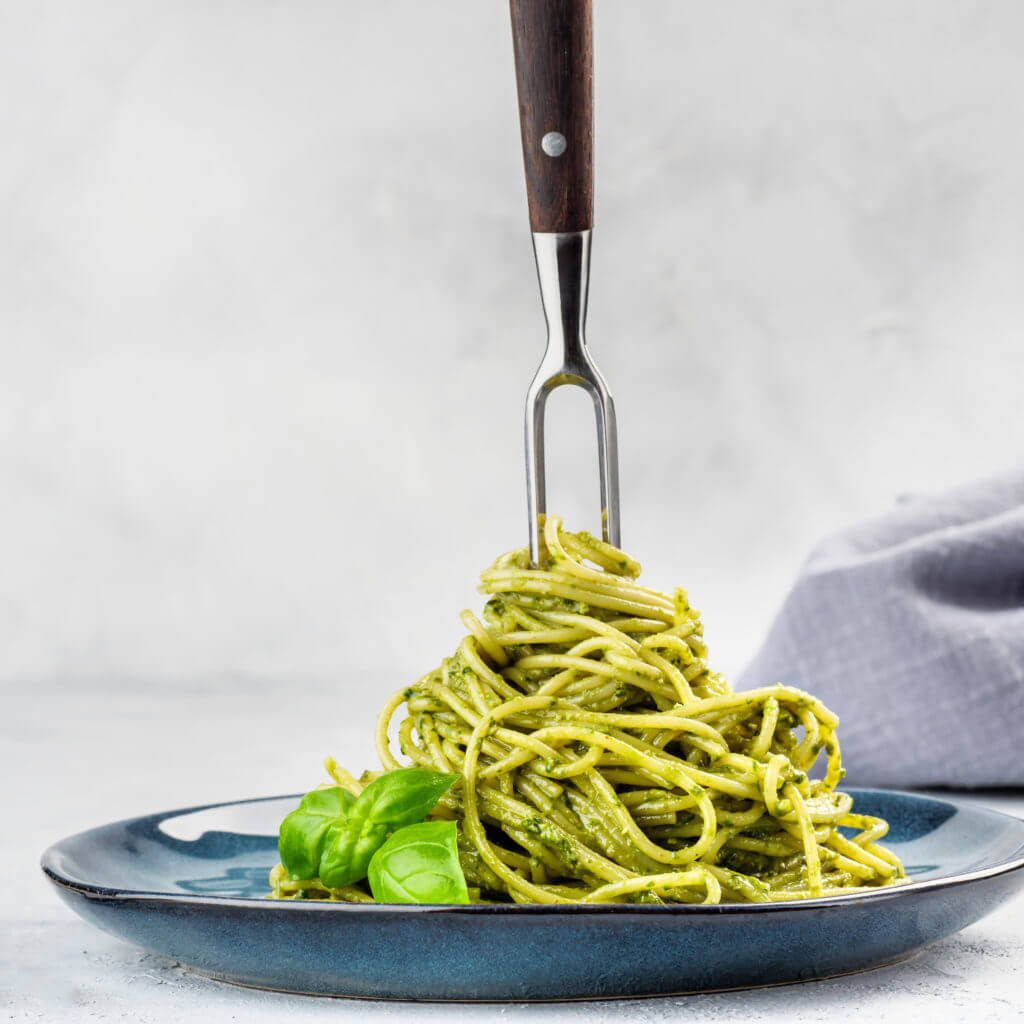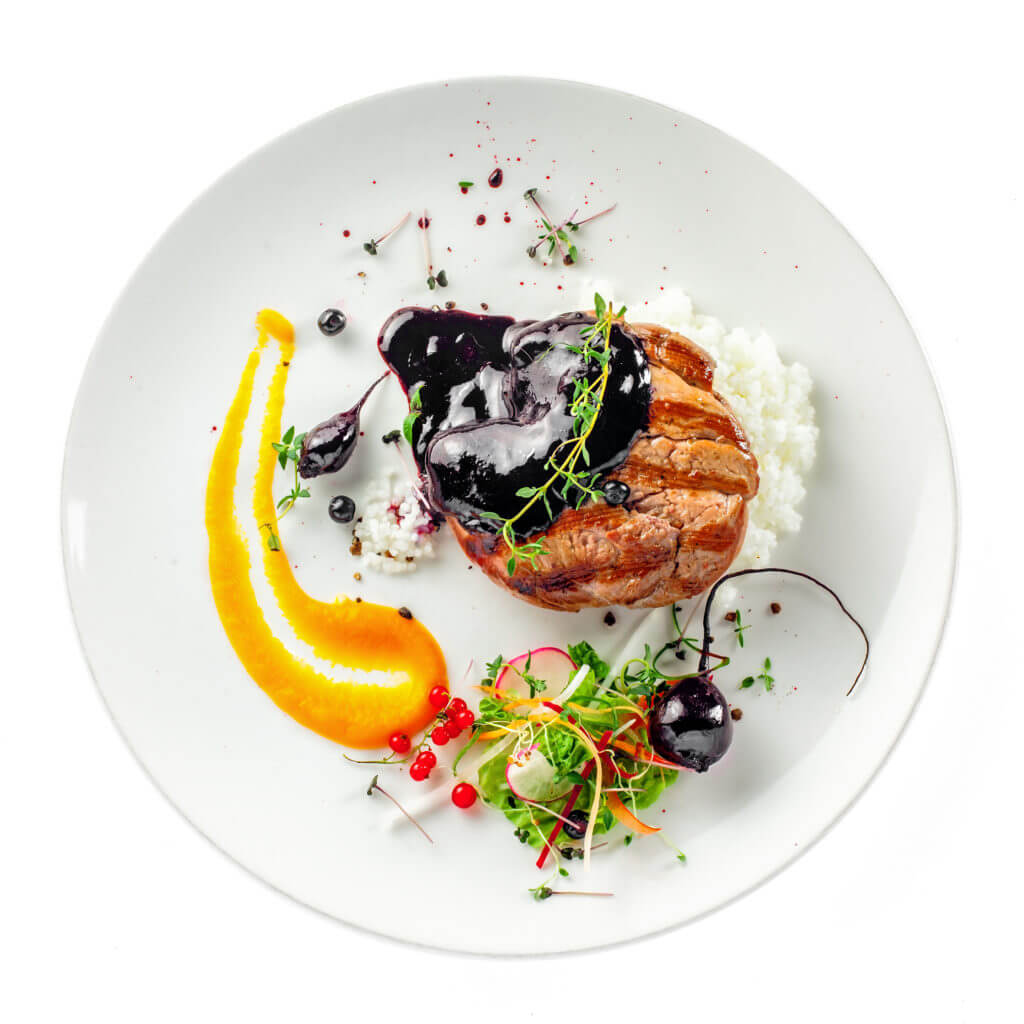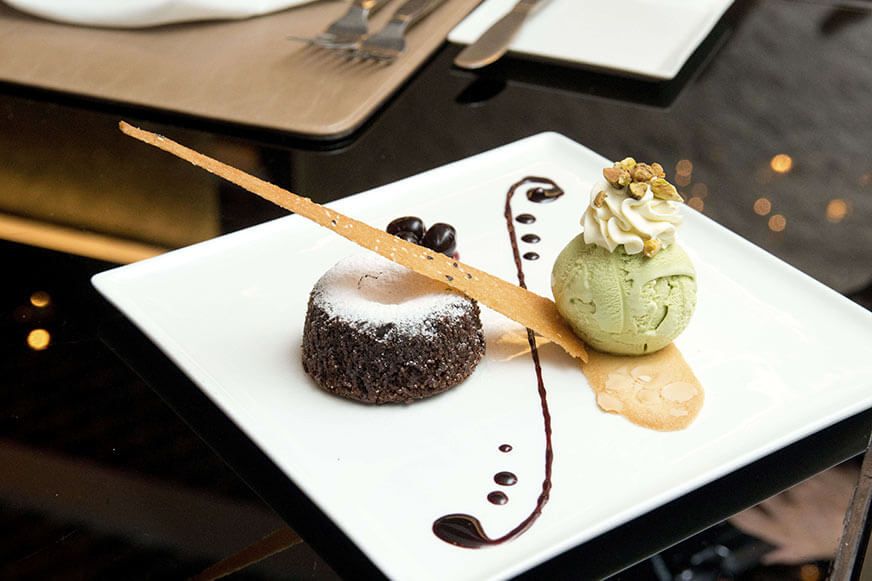4 Tips To Become An Artist In Plating

There’s a well-known saying in the culinary world that, “People eat with their eyes first.” Human beings are highly visual, and we make our first assumptions based on what we see. Those assumptions can then carry through to what we taste.
In fact, one 2014 study showed that diners actually reported liking their food better when it was presented in a more attractive manner. So a focus on plating and presentation may do more than please the eye — it can please the taste buds, too.
Home chefs don’t have to go as far as our school’s namesake Auguste Escoffier, who served his famous Peach Melba wrapped in spun gold leaf and resting on the back or an ice swan! But careful plating can make the amateur chef look like a seasoned pro. Impress friends, dinner guests, or just the family as they gather around the table for Sunday dinner.
Here are four tips to help the home gourmet get started as a master of plating.
1. Start with the Canvas
The dish is the canvas for a culinary creation, so choosing the right backdrop is the first step to a beautifully plated meal.
Many high-end restaurants serve on classic white plates. A stark white backdrop makes the colors in the meal pop, whether you’re serving a vibrant salad or a more muted soup.
But other dish colors can also be used to create a beautiful effect. The key is to build contrast. So a green dish, like a pesto or pea soup, will pop in a cheerful orange or yellow bowl. An entrée that’s light in color would look striking against a dark grey plate.

Plating pros must also consider the size of their dish. The plate should be large enough to leave some “white space” between the elements of the meal, but not so large that half the plate is empty.
And finally, choose your shape. While a traditional dish may be presented to best effect on a simple round plate, there are plenty of other options like ovals, rectangles, and even triangles. For example, a long narrow plate could provide an interesting way to plate a row of identical items, like dumplings or bruschetta.
2. Think in Three Dimensions
The plate itself may be a flat canvas, but that doesn’t mean that the food should just lay there. Create some height on the plate to add visual interest.
No need to build the “food towers” that were so popular in fine dining in the late 1980s and 1990s. Instead, a simple layering approach can create some height and elegance.
Many chefs like to start with a sauce as the base of their plate. Then they may add a stable element atop the sauce, like a puree or mash. Protein or vegetables can be nestled on top. This simple layering creates visual interest and ensures that each bite contains a bit of everything — sauce, puree, and protein.
With a pasta dish, home chefs can build height by “twirling” it onto the plate or bowl with tongs. This simple trick makes a simple bowl of spaghetti look high-end.

Cooks can also lean items against each other to create some height. Fan out sliced protein to give diners a look at the perfectly cooked center. Rest your bright veggies against a well-browned chicken breast at a 45-degree angle for both height and color contrast.
Another way to have fun with dimension — make curls and spirals out of lemon rinds, shaved carrot, or paper-thin cucumber. These interesting shapes will make the plate look restaurant-ready.
3. Play with Colors and Textures
A meal of steak and potatoes may be delicious, but it doesn’t have much visual appeal. To make a dish pop, the pros always add a bit of accent color to attract the eye. The simplest way to add color is often a sprinkling of chopped green parsley or a drizzle of red balsamic vinegar. But we can do better than that!
Many vegetables are naturally bright, but they lose that vibrancy in the cooking process. Keep the color by blanching the vegetables before cooking. Simply bring water to a boil in a large pot and add cut vegetables. The water should return to a boil within about a minute. If it takes longer, add fewer vegetables in each batch.
Blanching time varies for different vegetables, so consult the recommendations from the National Center for Home Food Preservation. After the blanching is complete, move the food to an ice bath for a quick cool and to stop the cooking process. This method doesn’t cook vegetables all the way through, but it locks in the brightness that makes a plate more appealing.
Textures can also make a dish look more interesting. Creams and sauces create a soft contrast to larger food elements. And a sprinkle of something crunchy, like chopped nuts or a bit of crispy shallot, will tell the diner that there may be something unexpected in their first bite.
Culinary & Pastry Career Survey
Culinary & Pastry Career Survey
What's your ideal culinary career? Answer 20 simple questions and see if your dream career gets revealed to you.

We’ve compiled of all of the essential questions into one handy guide: Career options, description of skill requirements, and more!


4. Use the Right Tools
How do professional chefs create perfect dots of sauces on the plate, or spread a sauce so precisely?
They use the right tools!
Squeeze bottles with narrow tips make it easy to add light strings of sauce across the dish. They also let chefs squeeze tiny dots of sauces in perfect patterns.
 An offset spatula or precision tongs will let you place items on the plate without disturbing that delicate stack of veggies.
An offset spatula or precision tongs will let you place items on the plate without disturbing that delicate stack of veggies.
When it’s time to serve a puree or mousse, you’ll rarely see a chef use a spoon. Instead, a piping bag lets them squeeze these thick mashes.
A food-specific paint brush allows chefs to add streaks of color to the plate. And silicone plating wedges with ridges on the end can create patterns in a sauce with a simple swipe.
Experiment with Plating
So many home chefs spend hours lovingly crafting a meal for their friends and family, but they fall flat when it comes time to present. But plating is such a fun part of the cooking process.
Experiment with ways to make your own dishes stand out. If it doesn’t turn out right, you can always eat the evidence!
After some trial and error, home gourmets will be able to grace their dinner tables with their inventive and artistic plating displays.
Add to your skill set with online cooking classes from a partnership between Auguste Escoffier School of Culinary Arts Home Gourmet and America’s Test Kitchen. Or if you’re considering a culinary career, learn more about Escoffier’s online or on-campus degrees and diplomas in Pastry and Culinary Arts!
Did you find this article interesting? Try these next!
This article was originally published on February 17, 2017, and has since been updated.


